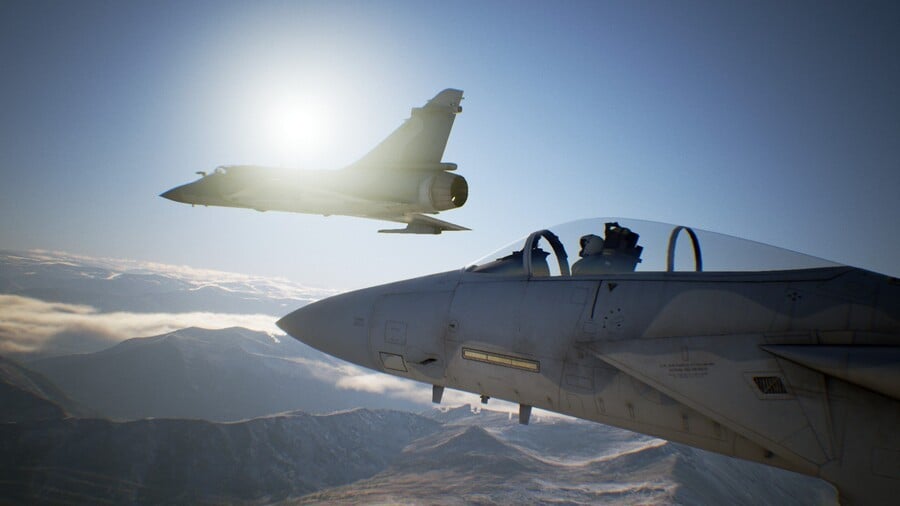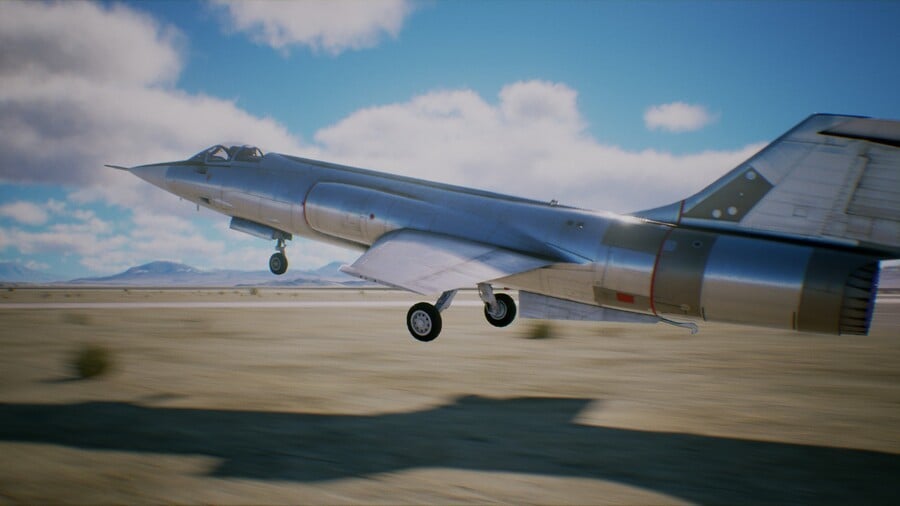
One of the coolest uses that we've seen for PlayStation VR yet is the experience of Ace Combat 7. The series has always been about high-octane, sky high dogfights, and now it's taken to a whole new level by placing you inside the cockpit for the first time. We recently got to sit down and have a chat with Kazutoki Kono to talk a bit about the upcoming flight sim, and he had some pretty interesting stuff to say.

Push Square: It's been almost ten years since the last numbered Ace Combat title. Why do you feel now is the right time for Ace Combat 7?
Kazutoki Kono: There have been a couple games in between, but they weren't part of the main line, if you will. As far as why we chose now, I think the technology was ready for the sort of expressions we want to do with the sky, how that looks and feels, as well as the depth and the storyline and what VR enabled us to do as an experience.
What do you intend to do with the current hardware that you could not do with the past generation?
The recurring theme throughout development of Ace Combat 7 was innovation in the sky, and you might've seen that in the trailer, as well. What we have done is created 3D clouds. I know that doesn't sound too innovative, but in the past, clouds were usually designed in an infinite parallax kind of method where you have flat layers that are stacked upon each other, but when you really go to 3D it allows for different expressions of realism. When you go into a cloud, it feels like you're really going into a cloud. It enabled us to explore new gameplay elements as well, including an almost hide and seek element where you can tuck away in a cloud and come back out, and that really opened up a whole new range of gameplay.

How would you say that virtual reality and PlayStation VR have changed your approach to development?
Largely, there are two directions we wanted to achieve and they converge on the idea of you being an ace pilot in the air force. The first is a seamless integration into the world and that's where the VR comes into play. What we really wanted to do was place you inside the world, and that's something that previous interfaces didn't allow us to do. At the same time, we want on the story level, for you to feel like you have this mission and heroic duty to achieve, and you are fully immersed in a narrative as an ace pilot.
Ace Combat has a long and storied history, but do you feel this is taking it to a new level? To clarify, would you say this is in line with your original vision for Ace Combat?
The overall direction of what we set out to achieve, even in the beginning, has never changed. We wanted to create vast skies and large environments where players can fly through clouds and engage in dogfights. But like you said, the technology has allowed us to come closer in reproducing that experience in the real world and a lot of that comes down to what we like to call "The Illusion". When you put the VR goggles on, it really creates an illusion, it tricks your brain into thinking you're really there. So, the direction has never changed, just the tools. The other half of that answer is from when I presented the question to my team, "Hey, who wants to fly in the skies with VR?" and the answer was unanimously "yes", which was an overwhelming cry that we need to do VR.

What were some challenges you faced developing such a historically intense arcade game with VR in mind? For example, how do you deal with issues like motion sickness?
To answer your question specifically about motion sickness, there have been some tricks we apply to ensure that there is prevention. For one, we keep the perspective in the cockpit; it's elements are fixed in space, so no matter how much you move your head, everything will be where it was. There were also some tricks – which I can't go into too much detail about – with the HUD, and how to have it interact with the VR motion. A lot of that comes from our experience with an arcade game called Mach Storm. It's based in a semi-dome structure and the images are projected inside. This gave us a lot of knowledge as to what makes people sick when they're put in a situation like that.
Are you considering any additional peripherals, such as a flight stick or PlayStation Move support?
In terms of its compatibility with PlayStation VR, I think the flight stick is definitely something we'd like to explore, so that's being looked into right now. As for Move, I'm having trouble envisioning how that would integrate with the VR experience. Maybe you could be the guys on the flight deck giving planes signals to land or take off. That could be a good use for Move, but as of this moment, there's really no plans for integration.

One last question: if any, what is your favorite title in the Ace Combat series and why?
I would have to say Ace Combat 5 and possibly Ace Combat 4 as well, and that's not just because we had the most overtime on those two games, but that was when I met the screenplay writer Sunao Katabuchi, and him and I debated a lot about the storyline and what it meant. Like what Ace Combat deserved and what story needed to be told through this medium, such as what the meaning of war was. It really taught me what it meant to be a franchise director, and if it wasn't for Ace Combat 4 or 5 and my meeting Mr. Katabuchi, there wouldn't be an Ace Combat 7. So, I think, as much as I like the new game, I think I enjoyed the process of making those two games the most.
Are you looking forward to taking off with Ace Combat 7 on the PS4? Will you be hitting the runway with PlayStation VR? Saddle up in the comments section below.





Comments 8
This finally reappears my eventual reason for buying a PS4 (when it's released).
I can't wait for this one. The trailer really surprised me; I don't know why, but I expected this to be a much lower budget project than it appears to be.
Never was that thrilled about VR. This may definitely change things.
Does anyone know if you will be able to play this without VR?
@hadlee73 Idk about you but I have never played an Ace Combat game for the acting lol.
😂
I didnt realised that they are so dedicated to VR. Sounds really great! And lets not forget: if they suceed, we might get an even bigger X-Wing experience!!!😍
I am very excited for AC7. I've been a big fan since Shattered Skies.
Tap here to load 8 comments
Leave A Comment
Hold on there, you need to login to post a comment...